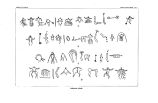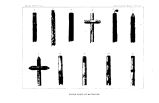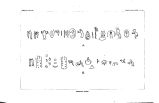| OCR Text |
Show 98 INDIAN LINGUISTIC FAMILIES. guages of the Sacramento." He adds that the personal pronouns show it to be a true Digger Indian tongue. Recent investigations by Mr. Gatschet lead him, however, to believe that ultimately it will be found to be linguistically related to the Sastean languages. GEOGRAPHIC DISTRIBUTION. The family was located by Hale to the southeast of the Lutuami ( Klamath). They chiefly occupied the area drained by the Pit River in extreme northeastern California. Some of the tribe were removed to Round Valley Reservation. California. PRINCIPAL TRIBES. Powers, who has made a special study of the tribe, recognizes the following principal tribal divisions : l Achoina/ wi. Estake'wach. Ilm&' wi. Atua'mih. Hante'wa. Pakamalli? Chuma'wa. Hum&' whi. PIMAN FAMILY. = Pima, Latham, Nat. Hist. Man, 898,1850 ( cites three languages from the Mithri-dates, viz, Pima proper, Opata, Eudeve). Turner in Pac. R. R. Rep., m, pt. 3,55, 1856 ( Pima proper). • Latham in Trans. Philolog. Soc. Lond., 98, 1856 ( contains Pima proper, Opata, Eudeve, Papagos). Latham, Opuscula, 356,1860. Latham, El. Comp. Phil., 427, 1862 ( includes Pima proper, Opata, Eudeve, Papago, Ibequi, Hiaqui, Tubar, Tarahumara, Cora). Gatschet in Mag. Am. Hist., 156, 1877 ( includes Pima, Nevome, Papago). Gatschet in Beach, Ind. Misc., 429,1877 ( demies area and gives habitat). Latham used the term Pima in 1850, citing under it three dialects or languages. Subsequently, in 1856, he used the same term for one of the five divisions into which he separates the languages of Sonora and Sinaloa. The same year Turner gave a brief account of Pima as a distinct language, his remarks applying mainly to Pima proper of the Gila River, Arizona. This tribe had been visited by Emory and Johnston and also described by Bartlett. Turner refers to a short vocabulary in the Mithridates, another of Dr. Coulter's in Royal Geological Society Journal, vol. xi, 1841, and a third by Parry in Schoolcraft, Indian Tribes, vol. in, 1853. The short vocabulary he himself published was collected by Lieut. Whipple. Only a small portion of the territory occupied by this family is included within the United States, the greater portion being in Mexico where it extends to the Gulf of California. The family is represented in the United States by three tribes, Pima alta, Sobaipuri, and Papago. The former have lived for at least two centuries with the 1 Cont. N. A, Eth. vol. 8, p. 267. |














































































































































































































































































































































































































